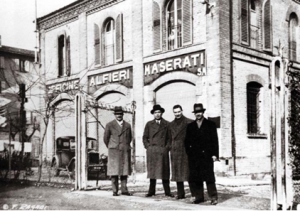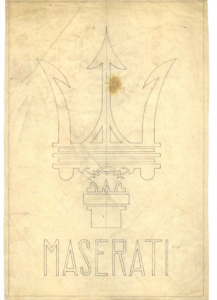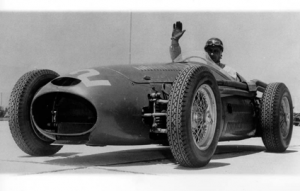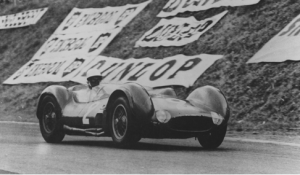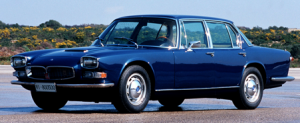Smooth, elegant, well aged, balanced, complex, crisp…and fast.
This article is a sponsored content by Todd Leong, Marketing Director of Empire Motor Sport, the sole authorized Maserati dealer.
There are the best wines, and then…there are luxury cars. Although there is a global culture that classic premium cars and wines exists hand in hand, the similarities in appreciation and sophistication go beyond the Sunday drive to the vineyards and annual Concours d’Elegance gatherings.
A fine wine often hails from a well known region, using a specific grape, the perfect soil, the ideal climate, the right time, and with the experienced vintner. Storied car brands build their own legacy similarly with historic beginnings, streaks of discovery, fine tuning, legendary designs and adaptations in technology.
Whereas the wine connoisseur may mention the renowned producing regions in France such as Bordeaux, Burgundy, and Loire, the pinnacle in performance luxury cars come from a region in Italy, the Mecca of Italian sports car houses, Modena. A region known for cheese (Parmigiano), balsamic vinegar, and Luciano Pavarotti, Modena and close surrounding regions, is in the bloodline of car brands such as Maserati, Ferrari, De Tomaso, Pagani, and Lamborghini.
Modena’s place in history for leading the world in super car brands for speed is undisputed. Although times have changed and the brands have moved (albeit nearby within 40 km of each other), the auto industry’s footprints are still visible. Enzo Ferrari’s home and studio, which still stands today as the Museo Enzo Ferrari, is located down the street from the Modena Maserati factory. Ferrari’s current base, Maranello, is a mere 20 minutes away from Modena. Lamborghini’s base is 30-minutes away in Bologna, which happens to be the birthplace of Maserati.
One brand holds a special place in Italian car design and history. As a sister brand to Ferrari under Fiat S.p.A, Maserati is the oldest Italian luxury performance car brand in existence. Although assembly still takes place in Modena (and Turin), Maserati engines are still designed and manufactured in Maranello by the Ferrari studio.
Founded in 1914 by four of the seven Maserati brothers, the legacy of Maserati was built on reputation and results through a passion for racing, design, perfection, and performance. As with wineries, the beginning stages of the venture was a family affair or in this case, brothers in arms. The brand was built through pushing the limits of technology, winning races, and building on its success. Neptune’s trident (influenced from the Fountain of Neptune in Bologna’s Piazza Maggiore) served as the reverent symbol for each car found on the track. It became synonymous with speed, power, and vigor.
As with the seasons influencing a grape’s growth and flavor, Maserati’s history has seen good years and bad years, world wars, various owners, and design changes influenced by some of the industry’s most respected designers. The hands that have touched the wheel of a Maserati have sculpted the history of the brand today while making landmark imprints in the history of motorsport and the industry. It’s hard to say which era was Maserati’s most impressive. Was it during the original motorsport beginnings under the Maserati brothers or the racing inspired years under the Orsi family? Or perhaps the memorable times were when the master designers were involved such as Vignale under the Citroën ownership, or when Pininfarina partnered for Maserati production cars while under Ferrari (and Fiat’s) control? One thing is sure, today, with Ferrari’s influence, there has been no other time in Maserati’s history where the brand has enjoyed both being at the top as far as opulence in comfort and design as well as performance and engineering.
The wine connoisseurs determine the success of the wine and its place in history. Judging on taste, aroma, along with the other 100’s of terms used to describe, a connoisseurs words can determine the wine’s market value and desire.
Similarly, success in engineering, designing and then racing in the early years of Maserati had contributed to its brand recognition and stamp as a reputable and successful auto house. Maserati became a sort of connoisseur of automobiles. Crossing the globe with championship drivers in Alfieri Maserati, America’s Wilbur Shaw, Thailand’s Prince Birabongse Bhanudej, Argentina’s Juan Manuel Fangio, Italy’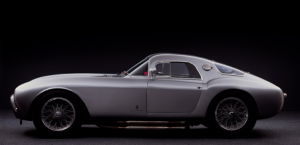 s Maria Teres de Filippis (first woman the race in Formula 1), and Britain’s Stirling Moss, Maserati’s indelible influence in motorsports and manufacturing helped pave the way the brand was built over the years. Maserati cars have been on the podium in almost all milestone races including Grand Prix, Formula One, and even the Indianapolis 500. The 1933 8CM, 1948 4CLT Monoposto, the 1957 250F, or the even more recent MC12 have become iconic Maserati speedsters which along with its designers and pilots at the wheels, kept the brand in the minds of enthusiasts around the world.
s Maria Teres de Filippis (first woman the race in Formula 1), and Britain’s Stirling Moss, Maserati’s indelible influence in motorsports and manufacturing helped pave the way the brand was built over the years. Maserati cars have been on the podium in almost all milestone races including Grand Prix, Formula One, and even the Indianapolis 500. The 1933 8CM, 1948 4CLT Monoposto, the 1957 250F, or the even more recent MC12 have become iconic Maserati speedsters which along with its designers and pilots at the wheels, kept the brand in the minds of enthusiasts around the world.
As with wines, certain vintages hold more value and reputation over the rest due to external influences of climate, environmental events (astronomical occurrences during harvest), and general scarcity. Performance (and some hype) of a certain vintage often drives the appreciation and desire. What are the elements of a good wine? Oak, chestnut, or pine barrels, natural corks, synthetic corks, or screw tops, green bottles or brown? What affects the taste and integrity of a wine? How was it was made, processed, bottled, then packaged and stored? Pressed under by hand or foot or processed through machines?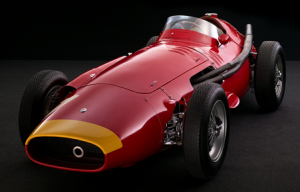
In the fine craft of auto design, the elements of the car, when put together in one package, the right combination of luxury and performance, make or break the model and the brand. Is it the taste of the Alcantara interior with a mix of modern carbon fiber, the right unique color, or the perfectly tuned Maserati exhaust sound? Is it the integrity of the steel frame and frameless windows, wind dynamics, or the reinforced pillars and soundproofing? Could it be the twin turbo V6 engine with a bruising 410 horsepower and 550 Nm of torque? A V8 with 520 horsepower 4-door sedan? Not that going over 300 kph was so useful in everyday driving, but just the thought it being there may be a luxury in itself. Some elements are more valuable and meaningful to others while some may not. How one appreciates a car for its level of luxury or performance, or both, is a personal choice. Just as with wines.
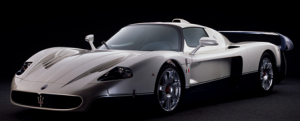 The label
The label
The all important naming of the wine is represented by the winemaker, region, and type of grape. For Maserati, there has been a history of initially naming the cars by their engine type, and then the more memorable ‘winds’ such as the Mistral (French), Ghibli (Libyan), Khamsin (Eqyptian), Shamal (Mesopotamian), and Bora (Adriatic). The latest range are rather more straight forward translations such as the Quattroporte (four doors), GranTurismo (grand touring) and GranCabrio (grand convertible). The badge of specific designers may also be found on the cars such as with the Pininfarina design studio.
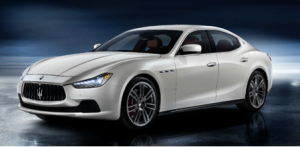 As with the occasional limited edition wines, Maserati has offered special models in collaboration with other well known luxury brands, such as the 2012 Fendi GranCabrio (limited to 50 worldwide) with signature Fendi stitched interior and details, or the 2014 Ermenegildo Zegna Quattroporte (limited to 100 worldwide) with custom interior and personalized luggage set. Maserati has even lent its name to other models under a different brand such as the Abarth 695 Edizione Maserati.
As with the occasional limited edition wines, Maserati has offered special models in collaboration with other well known luxury brands, such as the 2012 Fendi GranCabrio (limited to 50 worldwide) with signature Fendi stitched interior and details, or the 2014 Ermenegildo Zegna Quattroporte (limited to 100 worldwide) with custom interior and personalized luggage set. Maserati has even lent its name to other models under a different brand such as the Abarth 695 Edizione Maserati.
All in all, how a legacy brand of wine and cars is depends on its storied history, quality of product, and a somewhat consistency of success. Does the brand live up to its past models? How good are the newer ones? Leave that up to the connoisseurs. Sometimes it’s best to pop the cork (or twist the cap), pour, and put the foot to the pedal.
Currently, Maserati is celebrating its 100th year centenary with a tour of events taking place in Bologna, Modena, Cremona, and Turin. The event is sure to contain a packaged experience of history, vintage cars, touring, and lots of wine. Not during the driving of course.
 Todd Leong is the Marketing Director of Empire Motor Sport, the sole authorized Maserati dealer and after sales service provider in Thailand. An avid alcohol enthusiast and occasional traveler, any challenging assignment involving the outdoors, art, music, cars, food, wine and beer is an excuse to leave the comforts of the office. Todd holds an MBA from the Sasin Graduate Institute of Business Administration of Chulalongkorn University, and an architectural degree from the Rhode Island School of Design.
Todd Leong is the Marketing Director of Empire Motor Sport, the sole authorized Maserati dealer and after sales service provider in Thailand. An avid alcohol enthusiast and occasional traveler, any challenging assignment involving the outdoors, art, music, cars, food, wine and beer is an excuse to leave the comforts of the office. Todd holds an MBA from the Sasin Graduate Institute of Business Administration of Chulalongkorn University, and an architectural degree from the Rhode Island School of Design.



 0
0